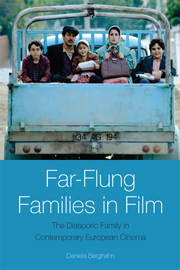Book contents
2 - Families in Motion
Published online by Cambridge University Press: 05 September 2013
Summary
A group of villagers is sitting in a circle under the canopy of a large tree. They are washing their hands with water poured from a metal jug and invoke the names of Allah and Mohammed. A ram is being sacrificed. Singing and dancing accompany the communal meal. This rural idyll and the observance of the Muslim Festival of Sacrifice, or Kurban Bayrami in Turkish, are suddenly disrupted, as the camera pans to a group of young boys who are playing on the nearby railway tracks. As a test of courage, they are lying on the tracks while a black steam engine with a grey plume of smoke is approaching rapidly. Who will hold out longest? The alarmed parents come to chase the boys off the tracks but a small boy stubbornly resists being picked up. The camera assumes his vantage point and, in a low-angle shot, captures the menacing approach of the train. He presses his body as flat as he can to the ground between the tracks and does not budge as the train thunders over him. Miraculously, he remains unharmed. The fast speed of the train along the long, straight tracks stands in stark contrast to the slow rhythm of village life, with its emphasis on circles and round objects that function as the visual correlative of the cyclical rhythm of the seasons and everyday life and the sense of stability and security they impart.
- Type
- Chapter
- Information
- Far-Flung Families in FilmThe Diasporic Family in Contemporary European Cinema, pp. 53 - 84Publisher: Edinburgh University PressPrint publication year: 2013



